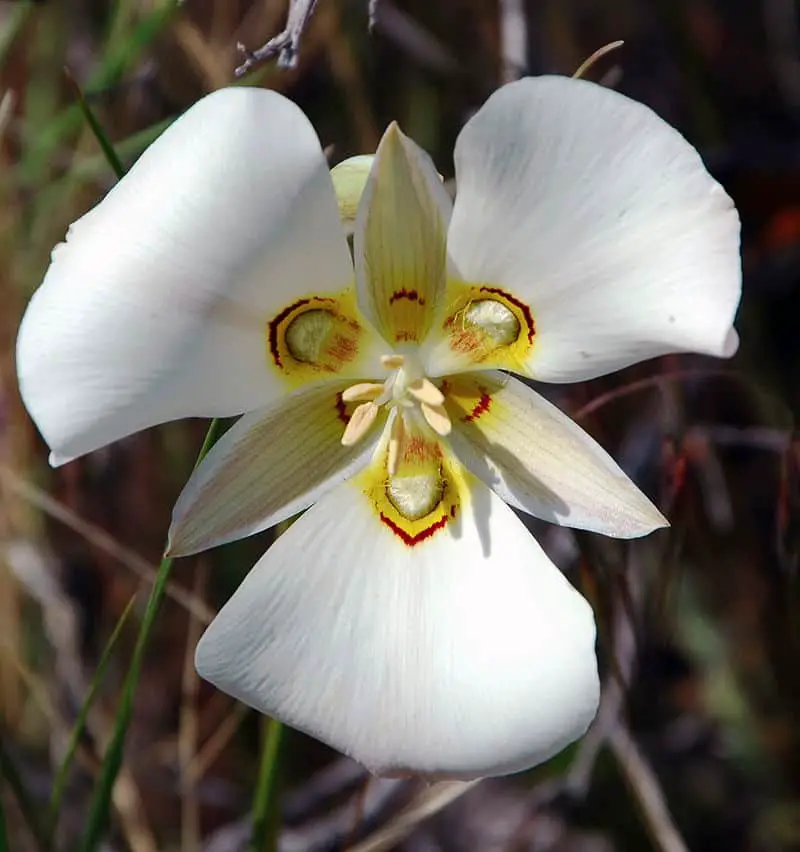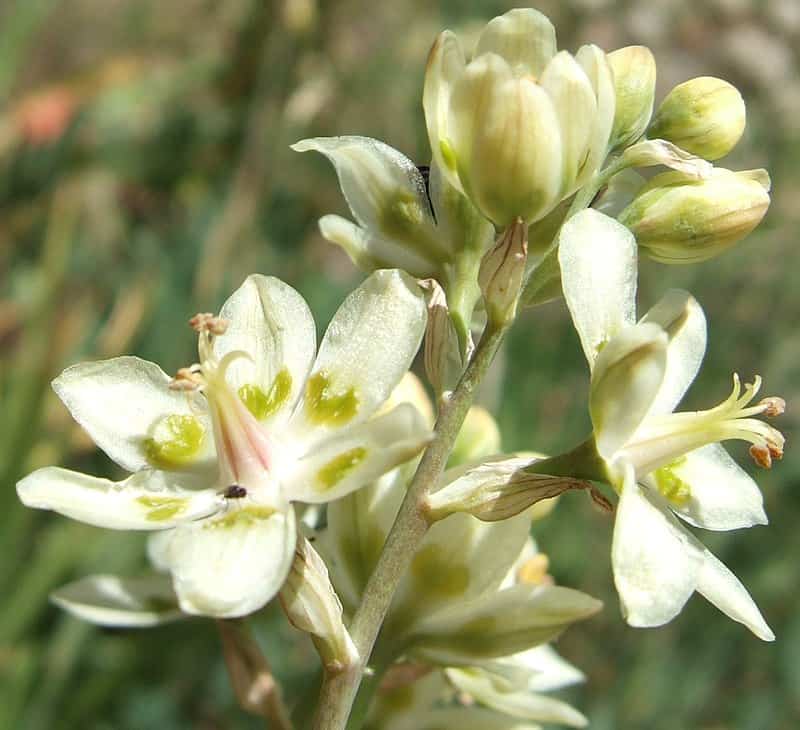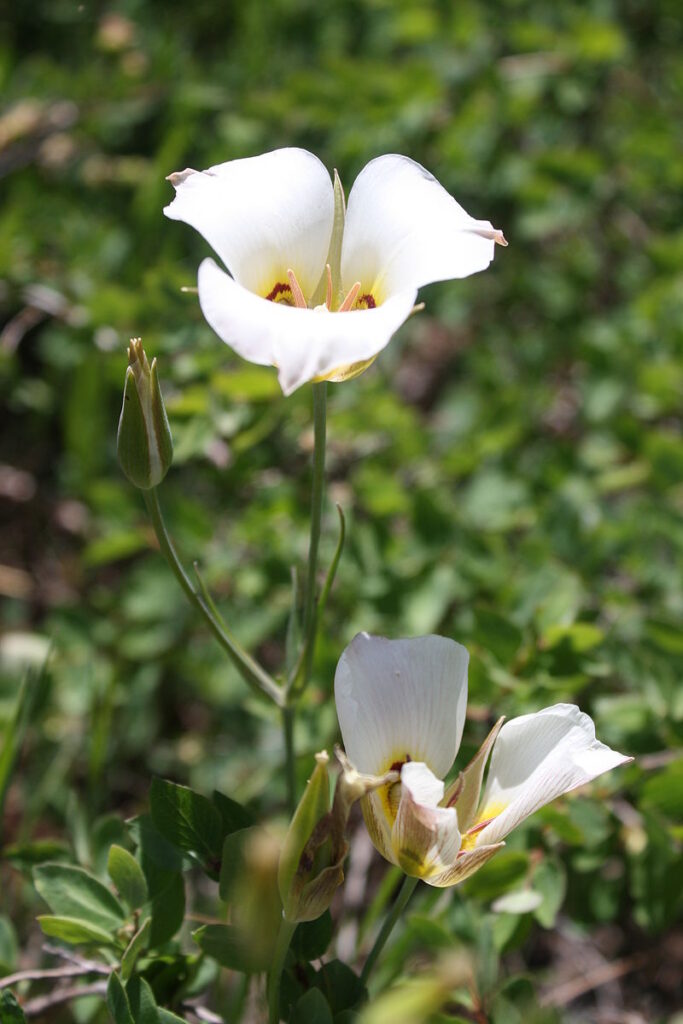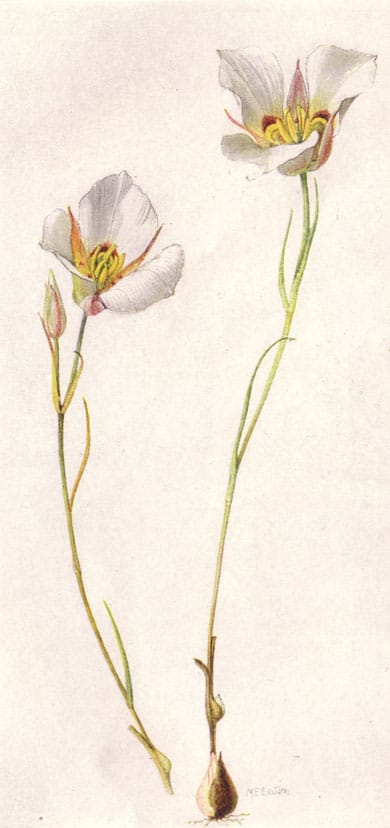Sego lilies, also known as Mariposa lilies, are beautiful and delicate wildflowers that are native plants to the western United States. Sego lilies typically have white petals with some yellow coloring at the center of the flower, sometimes with a spot of purple. They also have an interesting history as a food source, especially in the state of Utah.
Are Sego Lilies Edible?
Historically, sego lilies were an important source of food for many Native American tribes, who would harvest the bulbs and cook them for consumption. The sego bulbs are rich in starch and can be boiled or roasted to make a nutritious and filling meal. When cooked, the bulbous root of the sego lily tastes a lot like potatoes, though the bulbs are much smaller. The edible bulb is often just a little larger than a quarter. Sego lily bulbs, flower petals, and stems can be eaten raw, though the bulb definitely tastes better when cooked.
The real trick to eating the mariposa lily is correctly identifying it. The wild sego lily, also known as Calochortus nuttallii, is edible. (The nuttalli name is in honor of Thomas Nuttall, the 19th-century naturalist). It’s important to note that there are many other species of Calochortus lilies, counting 57 in total. You’ll find 28 different species of Calochortus lilies in the state of California. Most of these (40) are considered edible.
Some species of Calochortus lily are toxic or can cause allergic reactions if consumed. It’s important to be able to identify the specific species of sego lily that you are harvesting.
Furthermore, it’s worth noting that while sego lilies were an important food source for Native Americans in the past, they are no longer a commonly consumed food item. There are many other more readily available and safe food sources to choose from, and it’s generally not recommended to consume sego lilies unless you have extensive knowledge and experience in doing so.


While it can be dangerous to mistake one Calochortus lily for another, the bigger danger is in confusing the wild sego lily with its poisonous lookalike, the death camas.
Because there are so many ways to confuse sego lilies with other wild plants, it’s a good idea to spend some time just identifying these plants for a while until you’re comfortable doing so. Use multiple field guides (at least two) and get used to identifying the white flowers, yellow centers, purple dots, delicate stems, and sego roots. Be sure that you are experienced in identifying sego lilies and have confidence in your abilities to do so before trying these wild foods. Know that you can also identify its lookalikes so you’ll know the difference when you come across them.

What Sego Lilies Look Like
These wildflowers are often six to 18 inches tall, though you may find the occasional plant with long stems. The sego lily’s most distinguishing feature is its large, six-petaled flower. In the dusty landscape, they may sometimes be yellow flowers, but the petals are usually mostly white with yellow centers. The petals of the sego lily are often marked with darker lines or spots. The sego lily blooms in late spring to early summer. In Utah, it’s often the first bloom of the season.
The leaves of the sego lily are narrow and grass-like, with a bluish-green hue. The bulbs of the sego lily are also a distinguishing feature, as they are round and roughly the size of a walnut.
Overall, the sego lily is a delicate and beautiful flower that adds a splash of natural beauty to the rugged western landscape where it grows.

Cooking Sego Lilies
The bulbs of the sego lily are rich in starch and can be boiled or roasted to make a nutritious and filling meal. While sego lilies are no longer a commonly consumed food item, some people may still be interested in learning how to cook them.
If you want to boil sego lilies, you can start by placing the sego lily bulbs in a pot and covering them with water. Bring the water to a boil, then reduce the heat and simmer for about 30 minutes, or until the bulbs are tender. You can add salt or other seasonings to the water if desired. Once done, you can season these any way you’d season boil potatoes.
Another option is to roast sego lily bulbs over an open flame. To do this, remove the outer layer of the bulb and then skewer the bulb onto a stick. This is a fun way to eat them while camping. Hold the stick over the flame until the bulb is cooked through and tender. This method will give the sego lily bulbs a smoky flavor.
Some people like to season sego lilies with salt, pepper, or other spices. They can also be mixed with other vegetables like onions or chives to create a more complex dish.
The Official State Flower Of Utah
Sego lilies played a role of historical significance for the state of Utah. Historically, Native Americans knew sego lilies as a strong food source. When early settlers came to the area, they were met with many struggles, including a bad harvest year. Native Americans taught the Mormon pioneers about edible plants, including sego lilies. This food source kept them going and is now Utah’s state flower.

Where To Find Sego Lilies
As the Utah state flower, sego lilies can definitely be found around Salt Lake City, Arches National Park, and elsewhere in the state. In the Salt Lake Valley, there is a sego lily flower farm if you’re just wanting to see these flowers up close in person and not hunt for them in the wild. While you’ll often find people just saying they’re in the Western United States, you won’t actually find sego lilies in Washington or Oregon. You’ll want to look in the drier regions of the American West, like Arizona or Nevada.
These delicate white flowers can be found in a variety of habitats, from high mountain meadows to sagebrush flats, but they are most commonly found in dry, open areas. Look for places that get little rain and have sandy soil.
You can see sego lilies in the wild in the Grand Staircase-Escalante National Monument in southern Utah. This area is home to vast expanses of desert and mountain landscapes, and sego lilies can be found growing in abundance throughout the region.
One of the best places to find sego lilies in the wild is in the deserts of the American Southwest, including the Mojave, Sonoran, and Great Basin deserts. In these regions, sego lilies are often found growing alongside other desert-adapted plants, such as sagebrush, yucca, and prickly pear cactus. If you’re looking to see sego lilies in their natural habitat, these areas offer some of the best opportunities to do so.
Sego lilies can also be found in mountain meadows and other high-elevation habitats, especially in the Rockies and Sierra Nevada ranges. They thrive at elevations of 4,000 to 7,000 feet but can be found as high as 10,000 feet. In these areas, sego lilies often bloom in late spring and early summer, creating a colorful carpet of flowers that attract butterflies, bees, and other pollinators.
If you’re planning a trip to any of these regions, keep an eye out for these beautiful wildflowers and take a moment to appreciate their natural beauty.
Recent Posts
The only venomous snakes in Washington State are Northern Pacific Rattlesnakes. The Northern Pacific Rattlesnake (Crotalus oreganus oreganus) is a sub-species of the Western Rattlesnake. Anyone...
Skunks are not classified as true hibernators. But they go into a state of torpor when the weather gets cold. Skunks are light sleep hibernators, along with opossums, bears, and raccoons. ...
